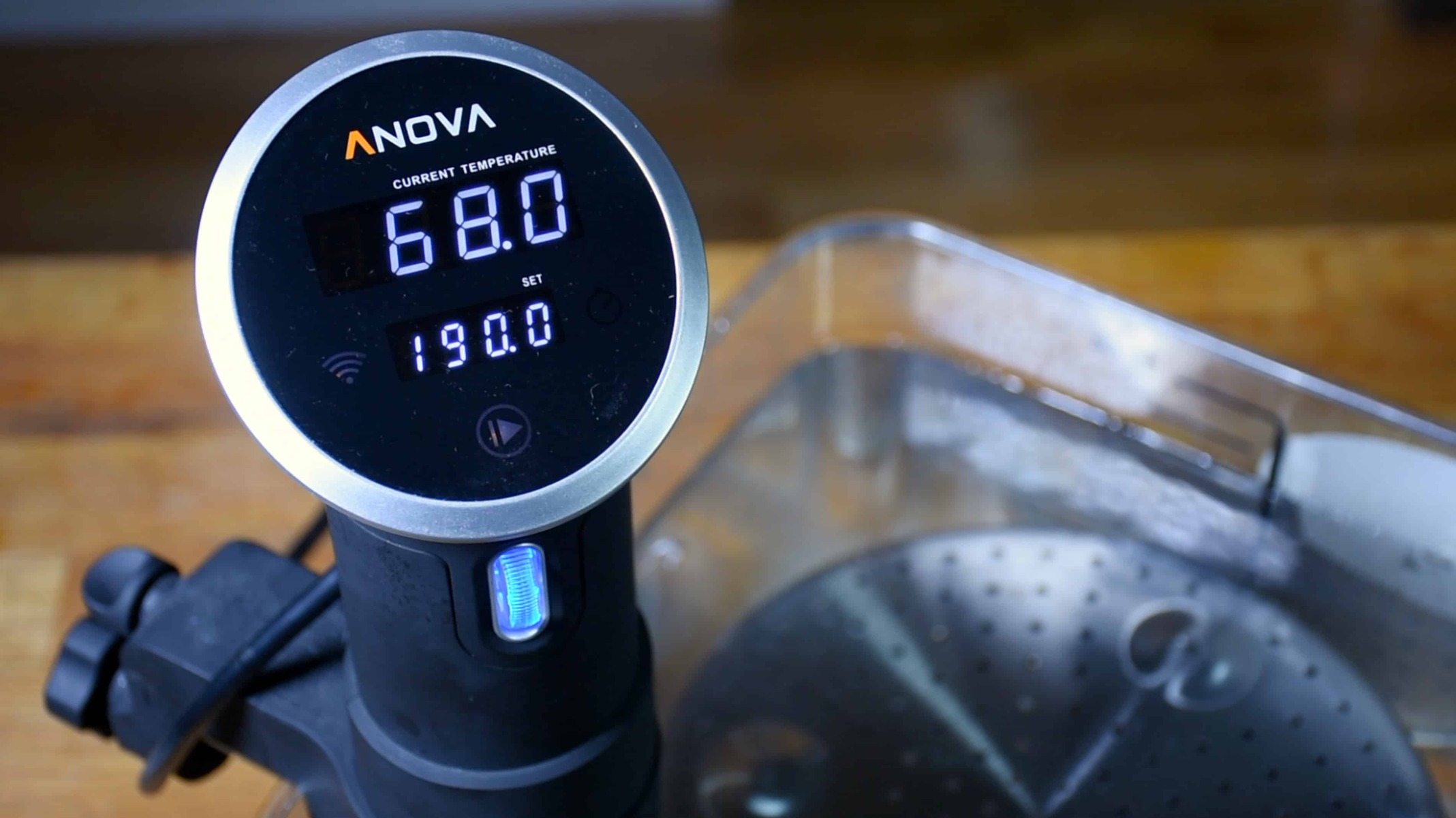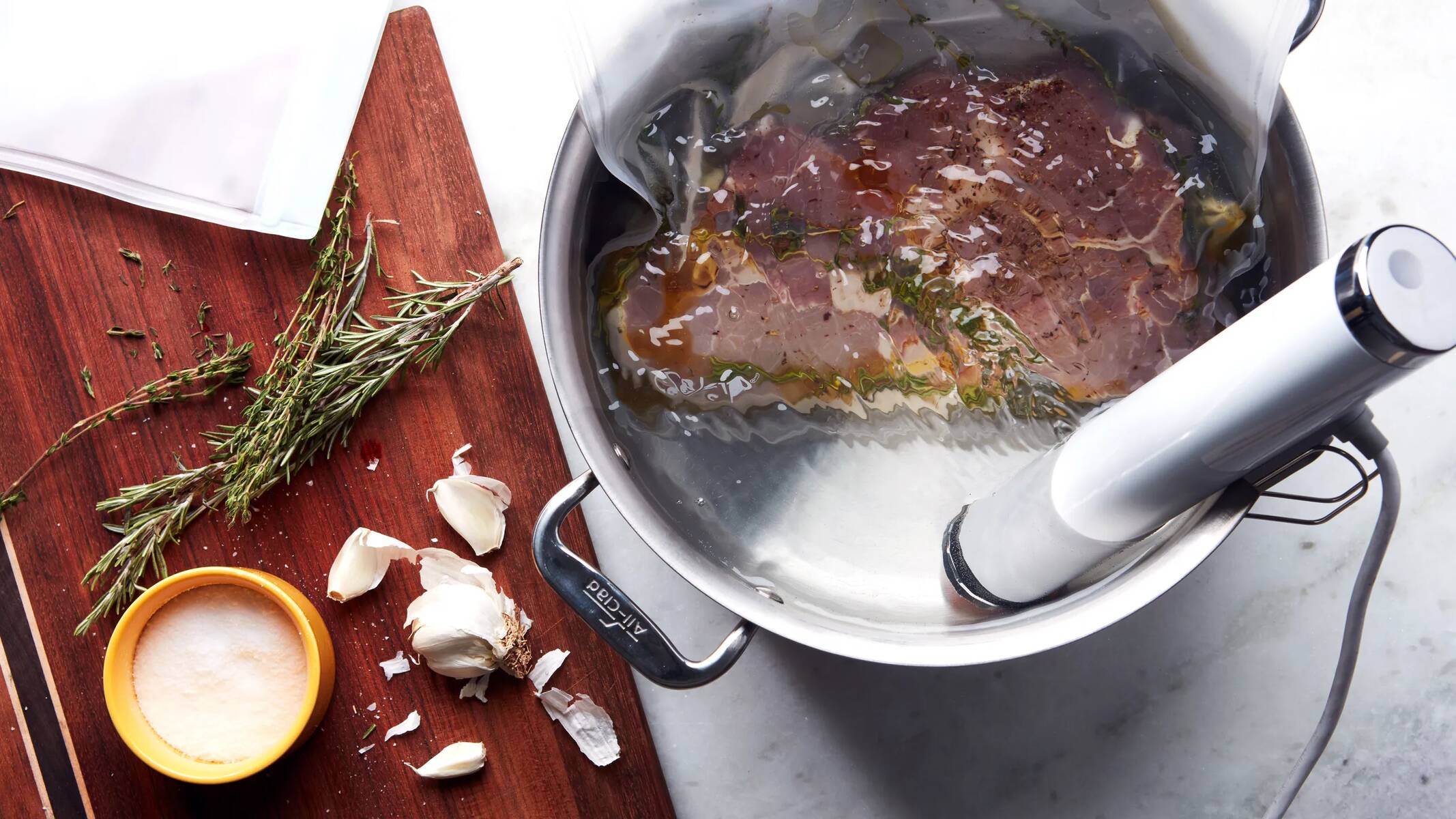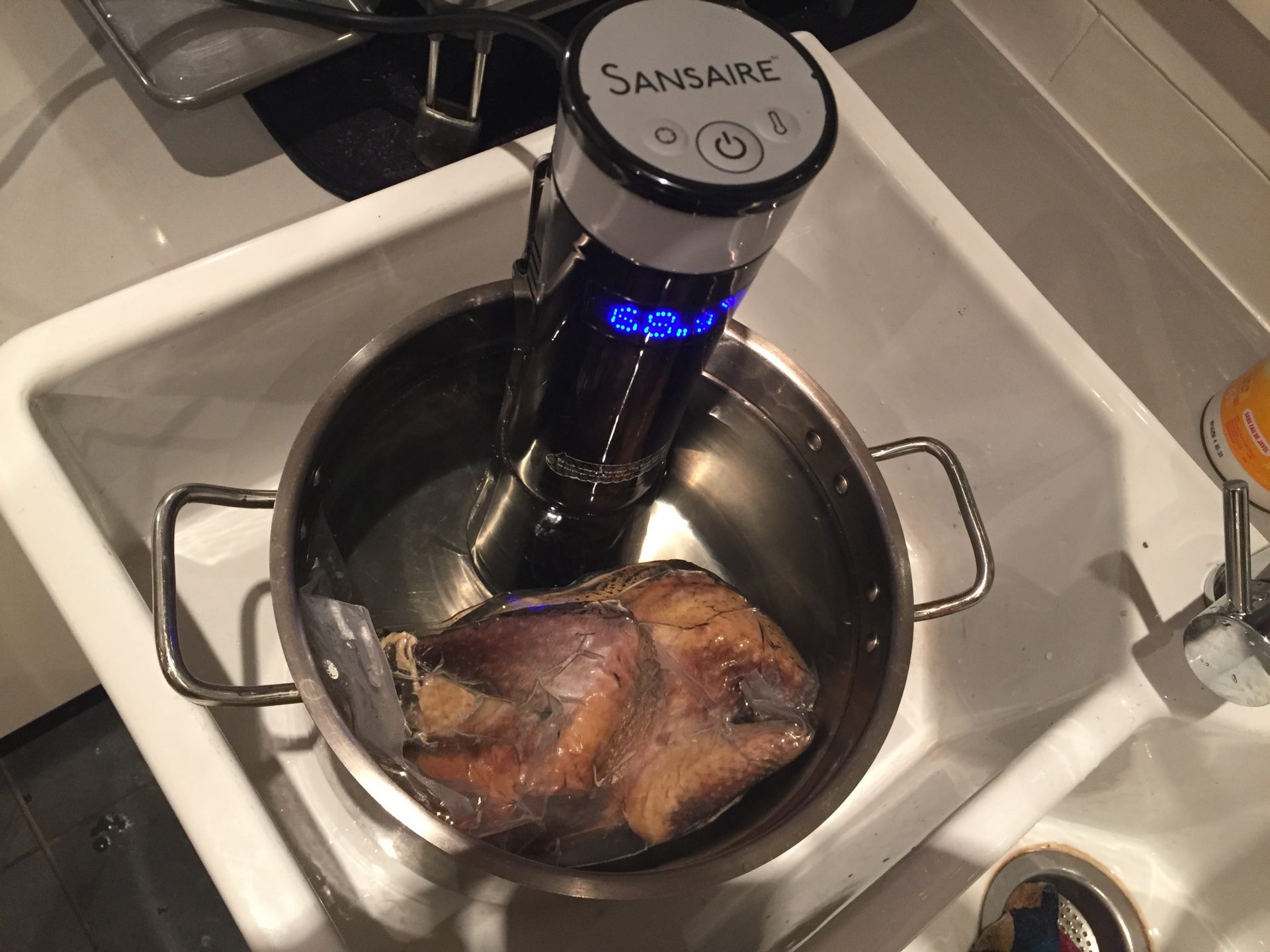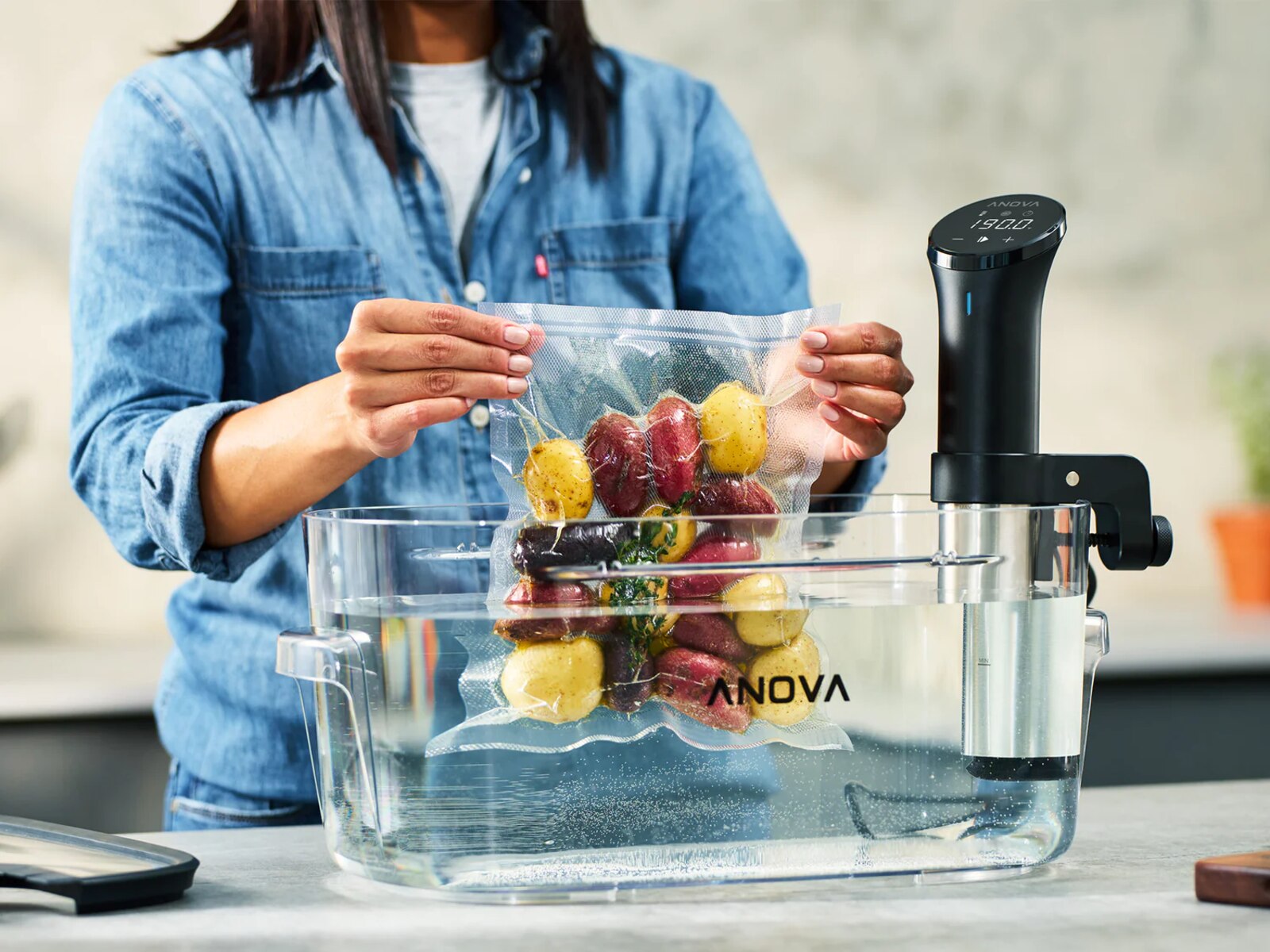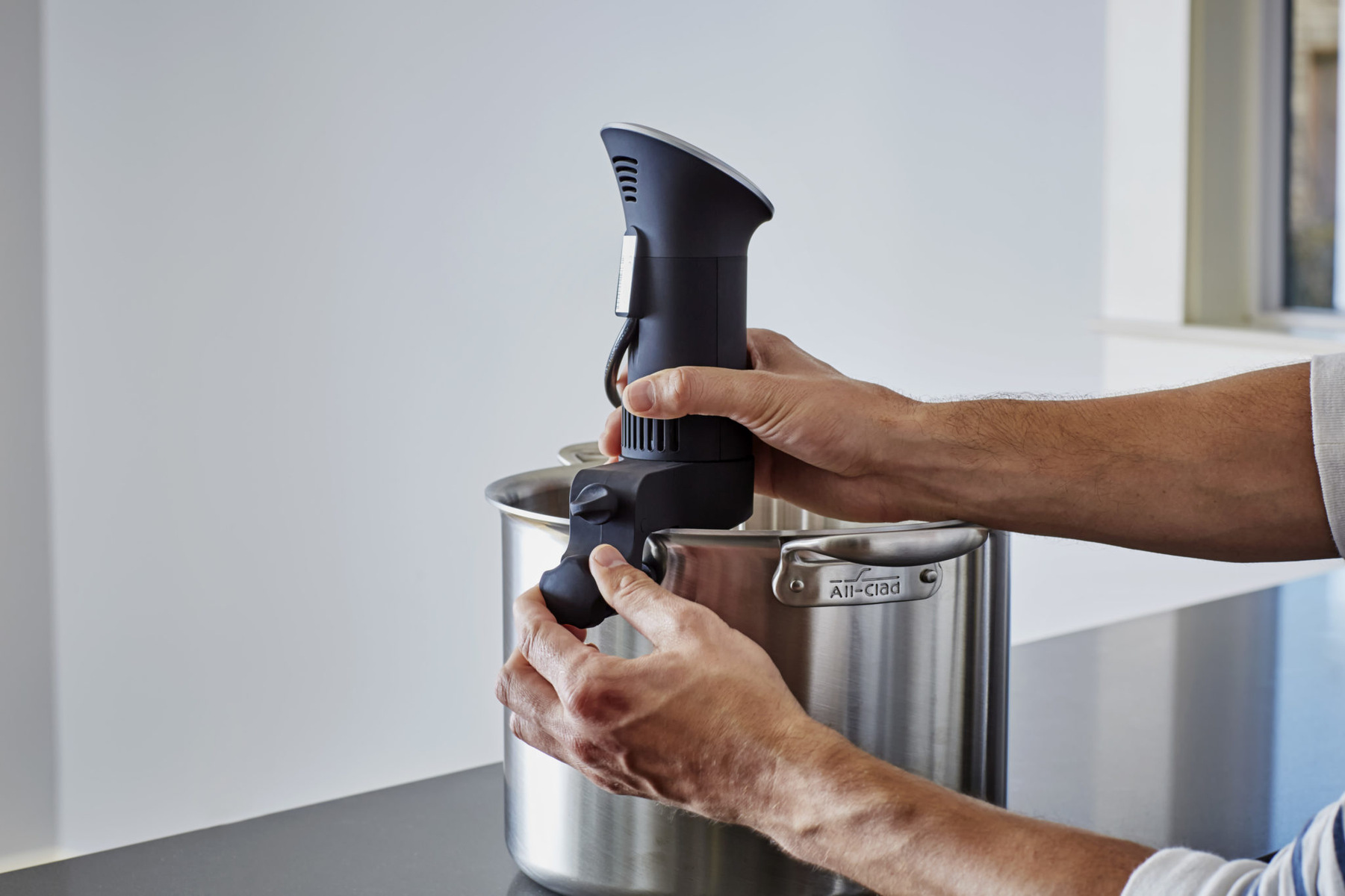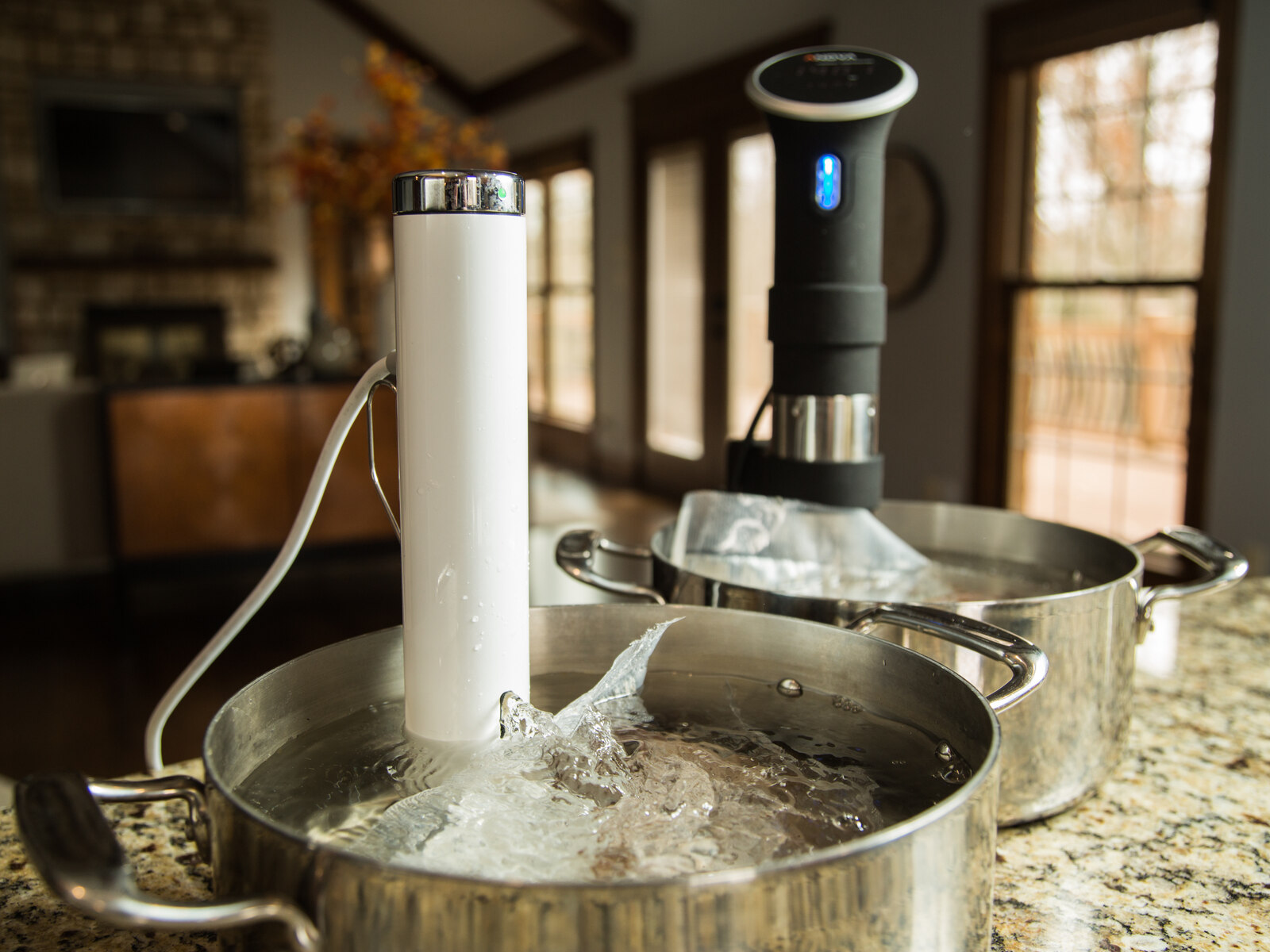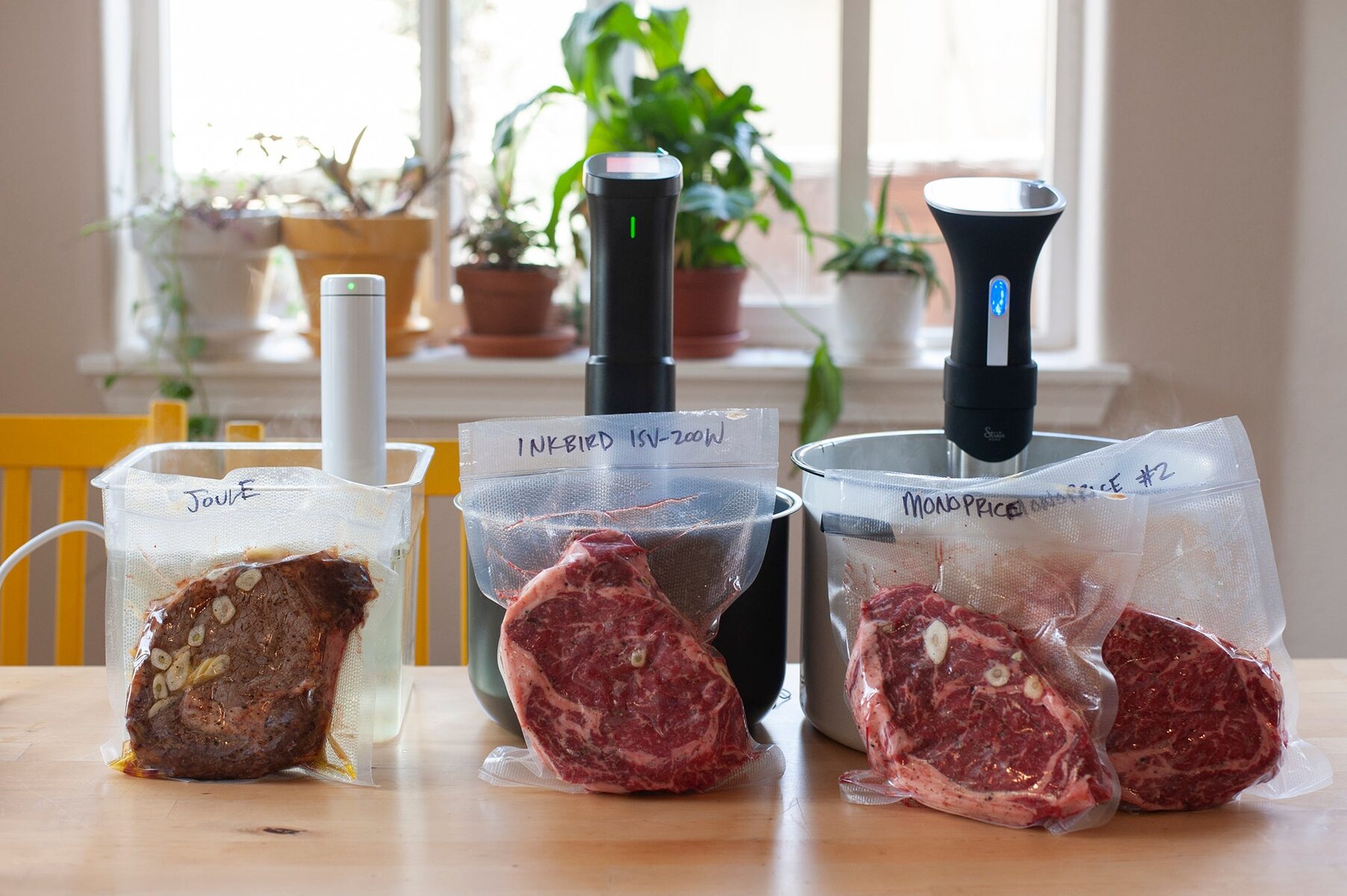Introduction
Welcome to the guide on how to clean a sous vide machine. As a passionate home cook, you know the joy of using a sous vide machine to achieve perfectly cooked meals with tender and flavorful results. However, regular cleaning and maintenance are essential to keep your sous vide machine in optimal condition. Not only does cleaning remove any residue or bacteria that can affect the taste and safety of your food, but it also extends the longevity of your machine.
In this article, we will walk you through the step-by-step process of cleaning your sous vide machine. We will cover everything from safety precautions to the specific supplies needed to properly clean your machine. By following these instructions, you can ensure that your sous vide machine continues to deliver exceptional cooking results every time.
Whether you’re a seasoned sous vide enthusiast or new to this cooking technique, this guide will equip you with the knowledge and skills to clean your machine effectively. So, let’s dive right in and discover how to give your sous vide machine the TLC it deserves!
Safety Precautions
Before we begin the cleaning process, it is crucial to prioritize your safety. Here are some important safety precautions to keep in mind:
- Unplug the Machine: Always start by unplugging your sous vide machine from the power source. This ensures that you avoid any electrical hazards while handling and cleaning the machine.
- Wait for the Machine to Cool: Allow your sous vide machine to cool down completely before starting the cleaning process. This prevents any potential burns or accidents from hot surfaces.
- Use Protective Gear: Wear gloves to protect your hands from any cleaning chemicals or hot water that you may come into contact with during the process.
- Read the Manufacturer’s Instructions: Different sous vide machines may have specific cleaning requirements. Therefore, it is essential to read and follow the manufacturer’s instructions for cleaning your particular model.
- Avoid Immersion of Electrical Components: When cleaning the machine, make sure to avoid immersing any electrical components or the power cord in water. This can cause damage to the machine or pose a safety risk.
- Proper Ventilation: Ensure that you have adequate ventilation in the area where you are cleaning your sous vide machine. This helps to prevent the build-up of fumes from cleaning agents and promotes a safe and healthy environment.
- Keep Children and Pets Away: During the cleaning process, it is crucial to keep children and pets away from the area to avoid accidents or exposure to cleaning chemicals.
By following these safety precautions, you can ensure a smooth and secure cleaning process for your sous vide machine. Now that we have covered the necessary safety measures, let’s move on to the supplies needed for cleaning.
Cleaning Supplies Needed
Before you begin cleaning your sous vide machine, gather the following cleaning supplies to ensure a thorough and effective cleaning process:
- Mild Dish Soap: Choose a gentle dish soap that is suitable for cleaning kitchen appliances. Avoid using harsh or abrasive cleaners, as they can damage the surfaces of your sous vide machine.
- Warm Water: Fill a basin or sink with warm water to use for soaking and rinsing the removable parts of your machine.
- Soft Sponge or Cloth: Use a soft sponge or cloth to wipe down the exterior surfaces of your sous vide machine. Avoid using abrasive materials, as they can scratch the finish.
- Cotton Swabs: Cotton swabs are ideal for reaching small and hard-to-reach areas, such as the crevices around the control panel or the gasket.
- White Vinegar: Vinegar is a natural cleaning agent that can help remove mineral deposits or scale from your sous vide machine. It is especially useful for cleaning the water bath.
- Baking Soda: Baking soda is a versatile cleaning agent that can help remove stubborn stains or odors from your sous vide machine.
- Microfiber Towel: Use a microfiber towel to dry and polish the surfaces of your machine after cleaning.
- Spatula or Scraper: A spatula or scraper can be useful for removing any dried-on food particles or residue from the water bath.
- Container for Soaking: Find a large container or basin that can accommodate the removable parts of your sous vide machine for soaking.
Having these cleaning supplies readily available will make the cleaning process more efficient and ensure that you have all the necessary tools to thoroughly clean your sous vide machine. Now that you have gathered the supplies, it’s time to start cleaning your machine step by step.
Step 1: Unplug the Machine
The first step in cleaning your sous vide machine is to ensure that it is unplugged from the power source. This step is crucial to prevent any accidents or electrical hazards during the cleaning process.
Simply locate the power cord of your sous vide machine and unplug it from the outlet. Make sure to disconnect it from any extension cords or power strips as well.
By unplugging the machine, you eliminate the risk of electric shock or damage to the machine while handling it and cleaning the various parts.
It’s important to note that even when the machine is turned off, it is still connected to a power source. Unplugging it ensures complete safety throughout the cleaning process.
Once you have safely unplugged the sous vide machine, you can proceed to the next steps of the cleaning process with peace of mind.
Now that the machine is unplugged, we can move on to the second step: emptying the water bath.
Step 2: Empty the Water Bath
After unplugging the sous vide machine, the next step is to empty the water bath. The water bath is where you typically place the food-filled bags for cooking.
Start by carefully removing any food bags or containers from the water bath. Be cautious as the water may still be hot, so use tongs or oven mitts to protect your hands.
Once the food has been removed, carefully pour out the water from the water bath. You can either pour it directly into the sink or use a separate container for convenience.
Ensure that you empty the water bath completely, removing any residue or floating particles in the process. This step is essential for proper cleaning and maintaining the hygiene of your sous vide machine.
Once the water bath is empty, you can proceed to the next steps of disassembling the machine and cleaning its various components.
Note: If there are any stubborn residues or mineral deposits inside the water bath, you can use a mixture of equal parts white vinegar and water to soak the water bath. Let it sit for a while, then scrub with a soft sponge or cloth to remove the residue before proceeding to the next step.
With the water bath empty, let’s move on to step 3: disassembling the machine.
Step 3: Disassemble the Machine
Now that the water bath is empty, it’s time to disassemble the various components of your sous vide machine. Disassembling allows you to access all the nooks and crannies that may have accumulated dirt, residue, or food particles.
Refer to the manufacturer’s instructions for your specific sous vide machine model, as the disassembly process may vary. However, here are some general steps to follow:
- Remove the Lid: Gently lift off the lid of the machine. Be careful as you handle the lid, as some models may have a hot surface.
- Take Out the Rack: If your sous vide machine has a removable rack, carefully lift it out and set it aside. This rack helps to keep the food bags separated during cooking.
- Dismantle the Gasket: Locate the gasket, which is the rubber seal around the interior of the machine. Carefully peel off the gasket, starting from one corner and working your way around. Take note of the gasket’s placement for easy reassembly later.
- Remove the Water Basin: Depending on your machine, you may need to remove the water basin. This involves lifting it up or sliding it out of the machine. Follow the manufacturer’s instructions for your specific model.
- Take Out the Heating Element: In some machines, the heating element may be removable. If this is the case, carefully remove it according to the manufacturer’s instructions.
- Detach Any Other Removable Parts: Depending on your specific sous vide machine, there may be additional removable parts such as filters or trays. Take note of these and detach them for thorough cleaning.
As you disassemble each component, take care not to force anything or use excessive pressure. If you encounter any resistance or have trouble removing a part, refer to the manufacturer’s instructions or seek assistance.
With the machine disassembled, you can now move on to step 4: wiping down the exterior of the machine.
Step 4: Wipe Down the Exterior
After disassembling the various components of your sous vide machine, it’s time to clean the exterior surfaces. The exterior of the machine can accumulate dirt, grease, or food particles during cooking, so it’s important to give it a thorough wipe-down.
Here’s how you can effectively clean the exterior of your sous vide machine:
- Dampen a Soft Cloth: Start by dampening a soft cloth or sponge with warm water. Make sure the cloth is not dripping wet but moist enough to clean the machine.
- Wipe the Surfaces: Gently wipe down the exterior surfaces of the machine, including the control panel, the sides, and the bottom. Pay attention to any areas with visible stains or spots and give them a little extra scrubbing.
- Don’t Forget the Control Panel: Use a cotton swab dipped in warm soapy water to clean around the buttons and dials on the control panel. Be gentle to avoid damaging the sensitive components.
- Dry the Surfaces: Once you have thoroughly wiped down the exterior of the machine, use a clean and dry microfiber towel to dry the surfaces. This helps prevent water spots or streaks from forming.
- Pay Attention to Safety Precautions: When cleaning the exterior, be mindful not to wet or touch any electrical components. It’s essential to follow safety precautions and avoid causing any damage to the machine.
By wiping down the exterior, you remove any visible dirt or stains, giving your sous vide machine a fresh and clean appearance. Now that the exterior is sparkling, let’s move on to step 5: cleaning the lid and gasket.
Step 5: Clean the Lid and Gasket
Now that you’ve wiped down the exterior surfaces, it’s time to focus on cleaning the lid and gasket of your sous vide machine. The lid and gasket can accumulate oil, residue, or food particles, so it’s important to give them a thorough clean.
Follow these steps to effectively clean the lid and gasket:
- Remove the Lid: If you haven’t already done so during the disassembly process, remove the lid from your sous vide machine.
- Prepare a Soapy Water Solution: Fill a basin or sink with warm water and add a few drops of mild dish soap. Mix the soap and water solution to create a gentle cleaning solution.
- Submerge the Lid: Submerge the lid in the soapy water solution and let it soak for a few minutes. This helps to loosen any dirt or residue from the lid’s surface.
- Scrub the Lid: Take a soft sponge or cloth and gently scrub the lid, paying special attention to any areas with stubborn stains or residue. Use gentle circular motions to lift off the dirt and grime.
- Rinse the Lid: Once you’ve thoroughly scrubbed the lid, rinse it under running water to remove any soap residue. Ensure that all soap is removed, as it can affect the taste of your food when using the machine again.
- Clean the Gasket: Using a damp cloth or cotton swab, carefully clean the gasket. Pay attention to any debris or residue that might have accumulated in the crevices. Ensure that the gasket is completely clean and free from any food particles.
- Dry the Lid and Gasket: Once you’ve cleaned the lid and gasket, use a clean and dry microfiber towel to remove any excess moisture. Ensure that both the lid and the gasket are completely dry before reassembling the machine.
Cleaning the lid and gasket thoroughly helps in ensuring proper hygiene and maintaining the performance of your sous vide machine. With the lid and gasket clean, we can move on to step 6: cleaning the water bath.
Step 6: Clean the Water Bath
After cleaning the lid and gasket, it’s time to shift your attention to cleaning the water bath of your sous vide machine. The water bath is where you place the food for cooking, so it’s important to keep it clean and free from any residue or impurities.
Follow these steps to effectively clean the water bath:
- Prepare a Cleaning Solution: Fill the water bath with a mixture of warm water and a small amount of mild dish soap. This gentle cleaning solution will help remove any oil, residue, or stains.
- Let it Soak: Allow the cleaning solution to soak in the water bath for about 15-20 minutes. This will help to loosen any debris or residue that may have accumulated on the surface.
- Scrub the Water Bath: Use a soft sponge or cloth to gently scrub the water bath, paying extra attention to any areas with visible stains or residue. Use circular motions and apply gentle pressure to remove any debris or stains.
- Focus on Corners and Edges: Pay special attention to the corners and edges of the water bath, as these areas tend to accumulate more dirt and residue. Use a cotton swab or small brush to reach into the crevices for a thorough clean.
- Rinse the Water Bath: After scrubbing, rinse the water bath thoroughly with clean water to remove any soap residue. Ensure that all cleaning solution is rinsed off to prevent affecting the taste of your food.
- Remove Mineral Deposits: If there are any mineral deposits or stubborn stains in the water bath, you can use a mixture of equal parts white vinegar and water to soak the affected areas. Let it sit for a while, then scrub again with a sponge or cloth.
- Dry the Water Bath: Once you’ve cleaned the water bath, use a clean and dry microfiber towel to dry the surfaces. Make sure the water bath is completely dry before reassembling the machine.
Cleaning the water bath thoroughly ensures that you maintain a clean cooking environment and prevent any potential contamination. With the water bath clean, we can now move on to step 7: cleaning the heating element.
Step 7: Clean the Heating Element
As we continue our cleaning process, it’s important not to overlook the cleaning of the heating element in your sous vide machine. The heating element is responsible for maintaining the desired temperature of the water bath during cooking, so it’s essential to ensure it is clean and free from any residue or build-up.
Follow these steps to effectively clean the heating element:
- Ensure the Machine is Unplugged: Before cleaning the heating element, make sure the machine is completely unplugged from the power source to avoid any electrical hazards.
- Inspect the Heating Element: Take a close look at the heating element to assess if there is any visible residue or debris present. In some models, the heating element may be covered by a protective plate, which you can remove for better access.
- Use a Soft Brush or Cloth: Gently brush away any loose debris or residue from the heating element using a soft brush or cloth. Take care not to scratch or damage the heating element while cleaning.
- Remove Stubborn Stains: If there are stubborn stains or build-up on the heating element, you can create a paste using baking soda and water. Apply the paste to the stains and let it sit for a few minutes before gently scrubbing with a soft brush or cloth.
- Wipe Down with a Damp Cloth: After cleaning the heating element, wipe it down with a damp cloth to remove any remaining baking soda residue or debris.
- Ensure it is Dry: Before reassembling the machine, ensure that the heating element is completely dry. Take a clean and dry cloth or paper towel to remove any moisture.
Keeping the heating element clean and free from residue or build-up ensures its proper functioning and helps maintain the performance of your sous vide machine. Now that the heating element is clean, let’s move on to step 8: reassembling the machine.
Step 8: Reassemble the Machine
After completing the cleaning of the various components of your sous vide machine, it’s time to reassemble everything. Reassembling the machine ensures that all the parts are in their proper places and ready for your next cooking adventure.
Follow these steps to reassemble your sous vide machine:
- Place the Heating Element: If you removed the heating element during the cleaning process, carefully place it back in its designated spot. Make sure it is secure and properly positioned.
- Insert the Water Basin: Place the water basin back into the machine, ensuring it fits snugly and is aligned properly.
- Reattach the Gasket: Take the gasket that you cleaned earlier and carefully reattach it to the interior of the machine. Press it firmly to ensure a proper seal.
- Reinstall the Lid: Place the lid back onto the machine, aligning it correctly with the water basin and ensuring a tight fit.
- Replace any Removable Parts: If you removed any additional removable parts during the disassembly process, such as filters or trays, reinsert them in their respective positions.
- Ensure Proper Arrangement: Double-check that all the components are properly arranged and in the correct positions. This will ensure that the machine functions correctly when you use it again.
- Plug In the Machine: Once you’re confident that everything is reassembled correctly, plug the sous vide machine back into the power source.
Reassembling the machine brings together all the cleaned components, allowing for smooth operation and safe cooking. With the machine reassembled, we can now move on to step 9: plugging in and testing the machine.
Step 9: Plug In and Test the Machine
After reassembling your sous vide machine, it’s time to plug it back in and perform a quick test to ensure that everything is in working order. This step allows you to confirm that the cleaning process has not affected the functionality of your machine.
Follow these steps to plug in and test your sous vide machine:
- Locate the Power Cord: Connect the power cord of your sous vide machine to a nearby electrical outlet.
- Power On the Machine: Turn on the power switch of your sous vide machine. Most models have a power button or a control panel to activate the machine.
- Set the Temperature: Select the desired temperature using the control panel or buttons on your machine. Confirm that the temperature changes accordingly on the display.
- Verify Heating: Wait for a few minutes to allow the machine to heat up. Check if the water bath starts to heat up as it reaches the set temperature.
- Listen for Unusual Noises: Pay attention to any unusual or strange noises coming from the machine. If you notice any concerning sounds, it may be wise to contact the manufacturer for further assistance.
- Monitor the Machine: Keep an eye on the machine for a few minutes while it operates. Ensure that it maintains the set temperature consistently without fluctuations.
- Perform a Test Run: If you feel confident that the machine is functioning properly, you can perform a short test run by cooking a small batch of food at the desired temperature. This will further ensure that the machine is working optimally.
By plugging in and testing your sous vide machine, you can verify that the cleaning process has not affected its functionality. If any issues arise during the test, refer to the manufacturer’s instructions or contact their customer support for further guidance.
Congratulations! You have successfully completed the cleaning process and verified that your sous vide machine is in good working condition. With a clean and well-maintained machine, you can now confidently continue creating delicious meals through the art of sous vide cooking.
Conclusion
Cleaning your sous vide machine is an essential step in ensuring its longevity, optimal performance, and the safety of your food. By following the step-by-step guide outlined in this article, you can effectively clean and maintain your sous vide machine with ease.
We began by emphasizing the importance of safety precautions to protect yourself during the cleaning process. Then, we discussed the necessary cleaning supplies and their role in achieving a thorough clean.
We walked through each step of the cleaning process, from unplugging the machine and emptying the water bath to disassembling the machine and cleaning its various components.
We emphasized the importance of cleaning the lid and gasket to remove any food residue and ensure a proper seal. Additionally, we highlighted the significance of cleaning the water bath and the heating element to maintain hygiene and optimal functionality.
We concluded with the reassembly of the machine, plugging it in, and performing a test run to ensure that everything is in proper working order.
By following these steps, you have taken the necessary measures to keep your sous vide machine in excellent condition, ready for your next cooking adventure. Regularly cleaning and maintaining your machine will not only extend its lifespan but also guarantee that your meals are prepared in a safe and sanitary environment.
Remember, always refer to the manufacturer’s instructions for specific cleaning guidelines tailored to your sous vide machine model. With proper care and maintenance, your sous vide machine will continue to deliver exceptional cooking results for years to come.







